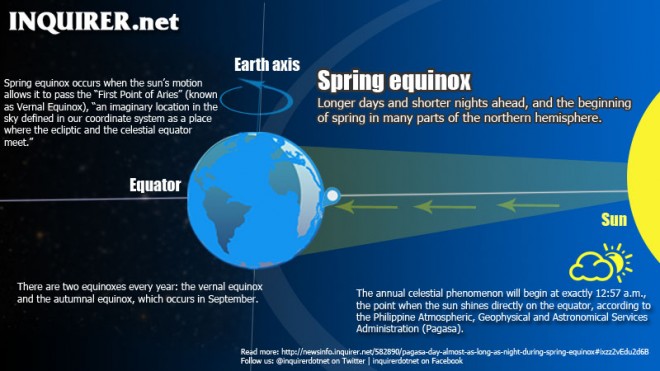MANILA, Philippines — Daytime will be almost as long as nighttime on March 21, the vernal equinox, which means longer days and shorter nights ahead, and the beginning of spring in many parts of the northern hemisphere.
Also known as the spring equinox, the annual celestial phenomenon will begin at exactly 12:57 a.m., the point when the sun shines directly on the equator, according to the Philippine Atmospheric, Geophysical and Astronomical Services Administration (Pagasa).
During the vernal equinox, “there is almost equal duration of daytime and nighttime in the world, in both northern and southern hemispheres,” said Jose Mendoza, the chief of Pagasa’s astronomical publication unit.
On that day, the sun will rise in the Philippines at 6 a.m., and set at 6:07, with insignificant time differences across the archipelago, according to Mendoza. (On Thursday, sunrise was at 6:10 a.m. and sunset at 6:05 p.m.)
After the vernal equinox, sunrise would typically occur earlier than 6 a.m., he said.
In its monthly astronomical diary, Pagasa explains that the spring equinox occurs when the sun’s motion allows it to pass the “First Point of Aries” (known as Vernal Equinox), “an imaginary location in the sky defined in our coordinate system as a place where the ecliptic and the celestial equator meet.”
There are two equinoxes every year: the vernal equinox and the autumnal equinox, which occurs in September.
RELATED STORIES
Vernal equinox: Days now as long as nights
Day equals night in length on Monday
